In 2025, customer service is being transformed by AI innovations and growing expectations for faster, more personalized experiences.
These needs are satisfied by contact center software, which combines self-service, chat, messaging, social media, email, and phone into a single interface. First Call Resolution (FCR), which measures how many problems are resolved on the first try, is a common metric used to gauge success. This integration enables teams to react swiftly and reliably.
According to SQM Group, even a 1% boost in FCR can raise a company’s net promoter score by 1.4 points.
Advanced capabilities such as intelligent callback queues are also changing how contact centers operate. Research by Fonolo shows these features can reduce wait times by up to 32%. When customers leave without warning, known as silent abandonment, agent output can fall by as much as 15%. Detecting and handling these cases quickly is key to keeping service levels steady.
The market outlook reflects the growing importance of these solutions. Fortune Business Insights forecasts market growth for contact center software from $63.90 billion in 2025 to $213.54 billion by 2032. Adoption of cloud-based systems and advanced data tools is fueling this increase by improving service efficiency and quality.
Essential Features of a Modern Contact Center Platform
As AI and digital-first services set the tone for 2025, businesses rely on contact center software to stay responsive. A contact center software is built to keep service smooth, fast, and reliable.
The best ones mix smart routing, ticket management, live monitoring, multiple channels, easy integrations, and tools that help agents do their jobs better.
1. Routing and Ticket Management
Routing decides where each request should land. It might be based on language, urgency, or agent skills. Menus and queue systems help organize the flow so customers aren’t stuck waiting too long.
Ticketing keeps everything in one thread, even if the conversation moves from phone to chat or email. That way, agents know exactly what’s been done and what’s still pending.
2. Omnichannel Engagement
Sometimes a customer starts a chat, then calls later to check on the same issue. If the earlier conversation is visible to the agent, the handoff feels seamless. Omnichannel tools make this possible by keeping every exchange connected in one view, which saves customers from having to revisit details they have already given.
3. Live Data and Analytics
In a contact center, things can change fast. A queue that looked fine ten minutes ago might now be packed. That’s why supervisors keep an eye on live screens, watching how long people have been waiting and stepping in if service targets start slipping.
Wall displays or timely notifications draw attention to growing queues before they cause trouble. The deeper reports look beyond the day’s activity, revealing patterns, gaps in training, and recurring process slowdowns that might otherwise be missed.
4. Connected Tools
The best platforms work alongside CRMs, scheduling tools, knowledge libraries, and reporting systems. When those are linked, agents spend less time hunting for information and more time fixing problems.
5. Support for Agents
Some systems watch for the tone of the conversation, offer reply suggestions, or check call quality automatically. These small assists help agents stay consistent and keep things running smoothly, even when the pressure’s on.
Comparison Table: Best Contact Center Software in 2025
The table below highlights the top contact center solutions we’ve reviewed in 2025:
| Platform | Key Strengths | Ideal For | Notable Innovation in 2025 | Cloud-Based | G2 Rating |
| Kapture CX | AI-powered ticketing, multichannel engagement, and real-time analytics | Enterprises seeking a unified, automation-focused CX solution | Predictive analytics and AI-based forecasting for proactive customer service | Yes | 4.5/5 |
| UJET | Mobile-first design and in-app engagement | Brands focusing on mobile-friendly, personalized support | Advanced mobile CX features and intelligent agent assistance | Yes | 4.7/5 |
| Bright Pattern | Secure omnichannel delivery, fast CRM integration | Mid-sized to large organizations requiring quick deployment | AI-supported workflows and adaptable cloud infrastructure | Yes | 4.4/5 |
| LiveVox | Omnichannel communication, compliance-ready tools | Large-scale contact centers in regulated sectors | AI-driven scripting and detailed performance analytics | Yes | N/A |
| Talkdesk | Strong CRM integration, AI-based quality management, predictive routing | Enterprises aiming for AI-enabled operational efficiency | Automation and predictive capabilities that enhance resolution speed | Yes | 4.4/5 |
| 8×8 Contact Center | Omnichannel routing, sentiment analysis, secure payment options | Businesses seeking AI insights combined with compliance assurance | Integration of social messaging with secure transaction processing | Yes | 4.1/5 |
| Amazon Connect | Scalable serverless model, integration with AWS services | Operations using AWS that require global scalability | AI-driven routing combined with native AWS service integration | Yes | 4.4/5 |
| Zendesk Talk | Voice and SMS built into the Zendesk platform | Existing Zendesk users looking for native voice features | Unified CRM and contact center data for contextual and efficient support | Yes | N/A |
| Freshdesk CC | Quick setup, affordable omnichannel features | SMBs and growing teams | User-friendly design paired with advanced routing functions | Yes | N/A |
| Five9 | Inbound and outbound capabilities, AI-powered routing, CRM compatibility | Mid-to-large enterprises | Adaptive routing to maintain quality during periods of high demand | Yes | 4.1/5 |
| Twilio Flex | Fully programmable workflows, high customization | Developer-led teams or businesses with unique operational needs | Configurable interface and workflow automation tailored to business requirements | Yes | 4/5 |
Top 11 Contact Center Software to Consider in 2025
The platform that powers a contact center has a direct impact on how customers experience a brand. Selecting the right platform can simplify processes, keep operations organized, and support consistent service quality.
In 2025, the strongest options blend AI, powerful analytics, and tools for handling multiple communication channels to manage customer interactions effectively.
This combination helps support teams manage heavy inquiry loads without compromising on customer satisfaction.
Here’s our pick of the top 11 platforms that bring together AI, omnichannel support, and real-time analytics to deliver stronger customer experiences in 2025:
1. Kapture CX

Kapture CX provides a unified workspace for contact centers that includes ticketing, call routing, performance monitoring, and self-service capabilities. Artificial intelligence features increase the accuracy with which requests are processed.
Key Features:
- Creates tickets automatically and assigns them based on set SLAs
- Tracks performance through live, visual dashboards
- Gives customers self-help options linked to a detailed knowledge base
- Uses AI to assess sentiment and predict service demand
Ideal For: Operations that want to cut repetitive work, keep requests organized, and lift response quality with AI support.
Why It Stands Out in 2025: Predictive tools work ahead of demand, helping managers plan staffing and shape responses to fit each case.
Cloud-Based: Yes
G2 Rating: 4.5/5 (1,300+ ratings)
2. UJET
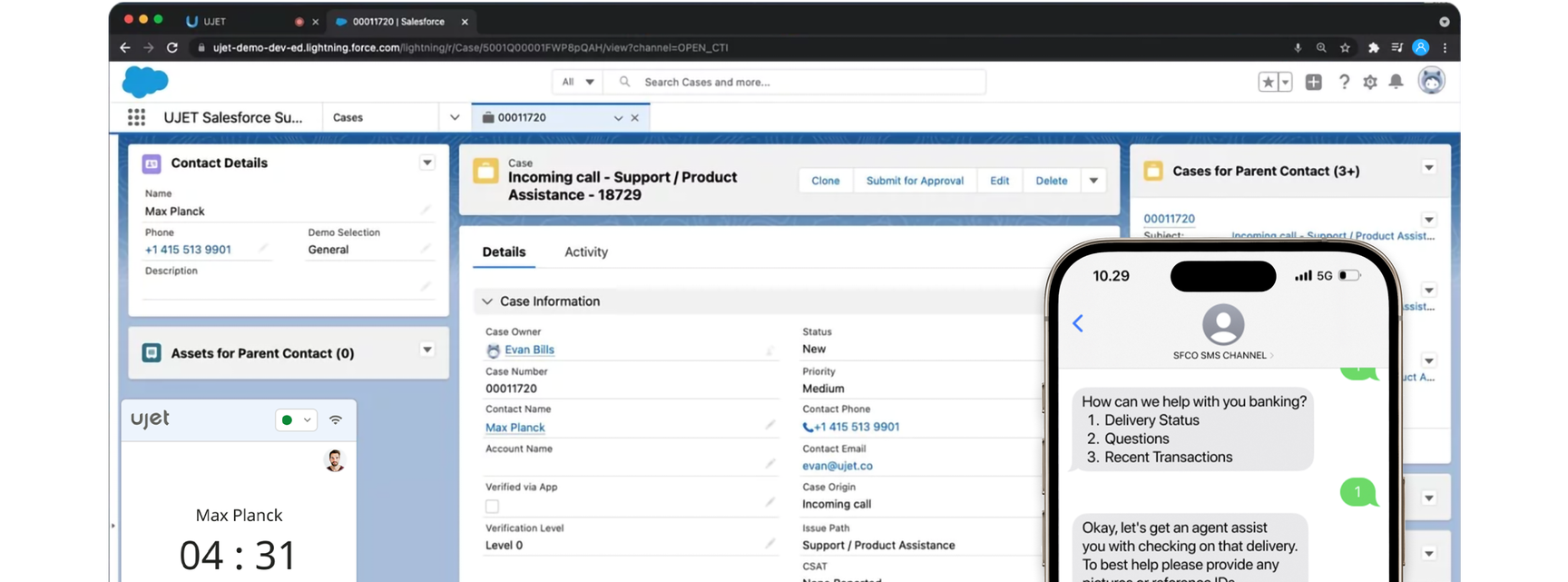
UJET is a cloud-native CCaaS solution made for customer engagement that prioritizes mobile. It provides smooth communication through chat, voice, and in-app channels.
Key Features:
- AI-based routing and IVR
- Unified agent desktop with virtual agent and assist tools
- Workforce management and live dashboards
- In-app and mobile communication with CRM integration
Ideal For: Brands that value mobile-friendly and personalized consumer experiences.
Why It Stands Out in 2025: Better mobile engagement and intelligent agent support allow for seamless, integrated client experiences.
Cloud-Based: Yes
G2 Rating: 4.7/5 (6,000+ ratings)
3. Bright Pattern
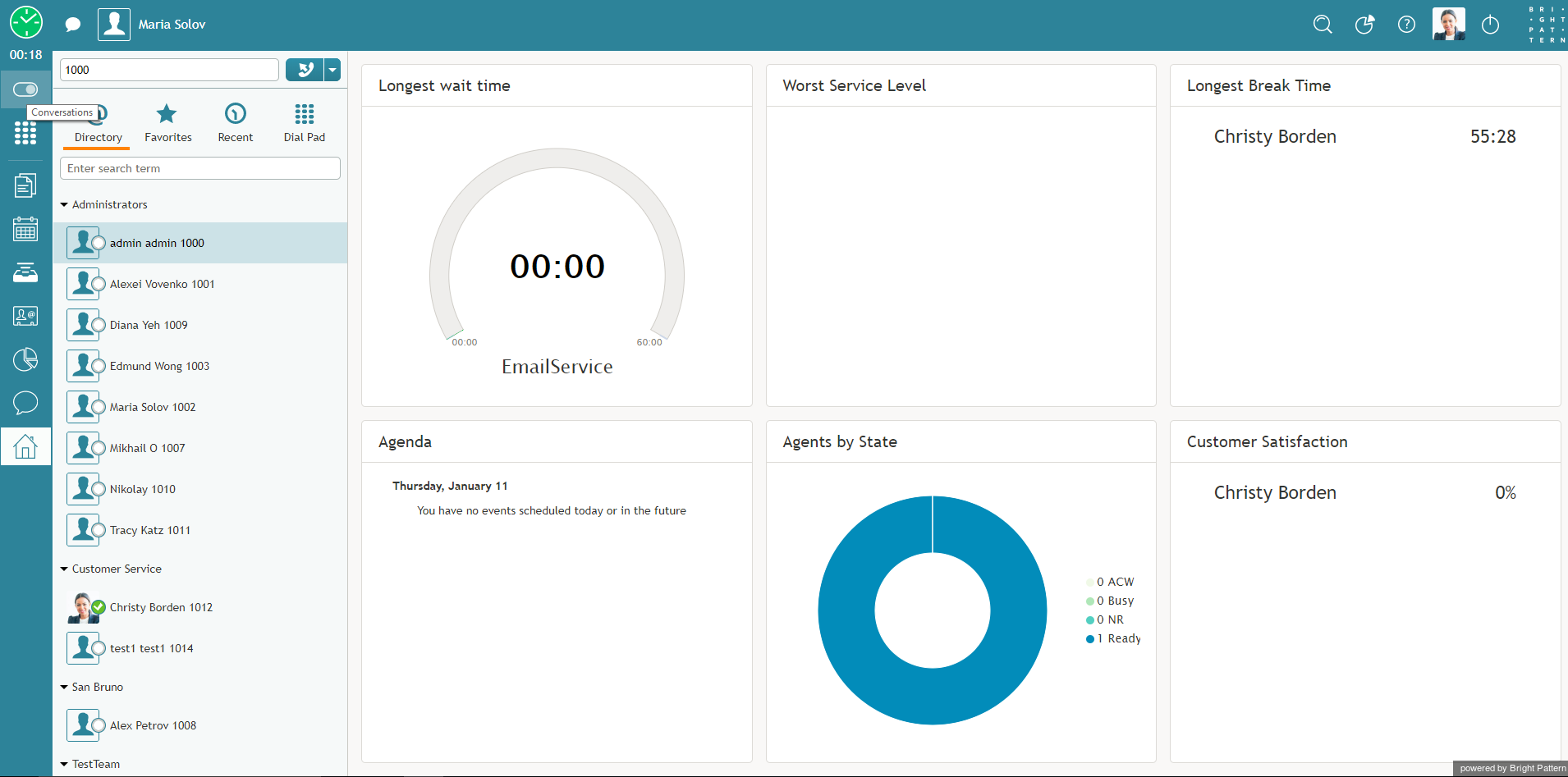
Bright Pattern is a cloud contact center platform designed for scalability and security. It easily integrates with CRM and ITSM systems, allowing service teams to work in tandem with the rest of the organization.
Key Features:
- Handles voice, chat, email, SMS, and social channels together
- Live dashboards for monitoring activity as it happens
- AI-assisted routing with automated workflows
- CRM links that cut down handling time
Ideal For: Larger businesses looking to get started fast without replacing their existing systems.
Why It Stands Out in 2025: With cloud technology and AI working together, service teams can handle more requests quickly and work from live data.
Cloud-Based: Yes
G2 Rating: 4.4/5 (80+ ratings)
4. LiveVox
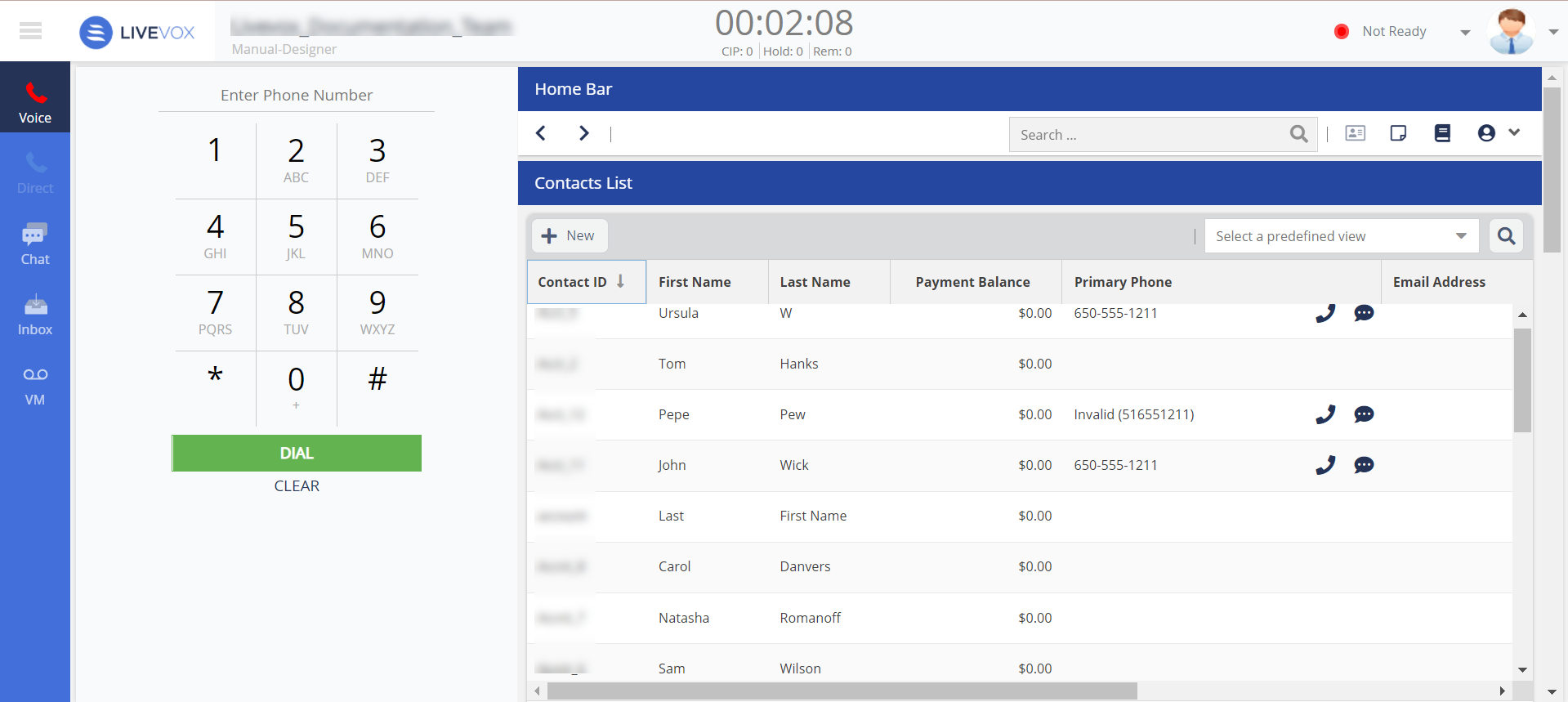
LiveVox offers CRM, omnichannel communication, and workforce management; all on one platform. It has features that aid in meeting compliance standards.
Key Features:
- Voice, SMS, email, and live chat channels
- Virtual agents, IVR, and predictive dialer
- Speech analytics and sentiment detection
- Dynamic scripting and coaching functions
Ideal For: High-volume call centers with strict compliance standards.
Why It Stands Out in 2025: AI-enabled workflows and accurate analytics contribute to consistent quality and efficiency.
Cloud-Based: Yes
G2 Rating: N/A
5. Talkdesk
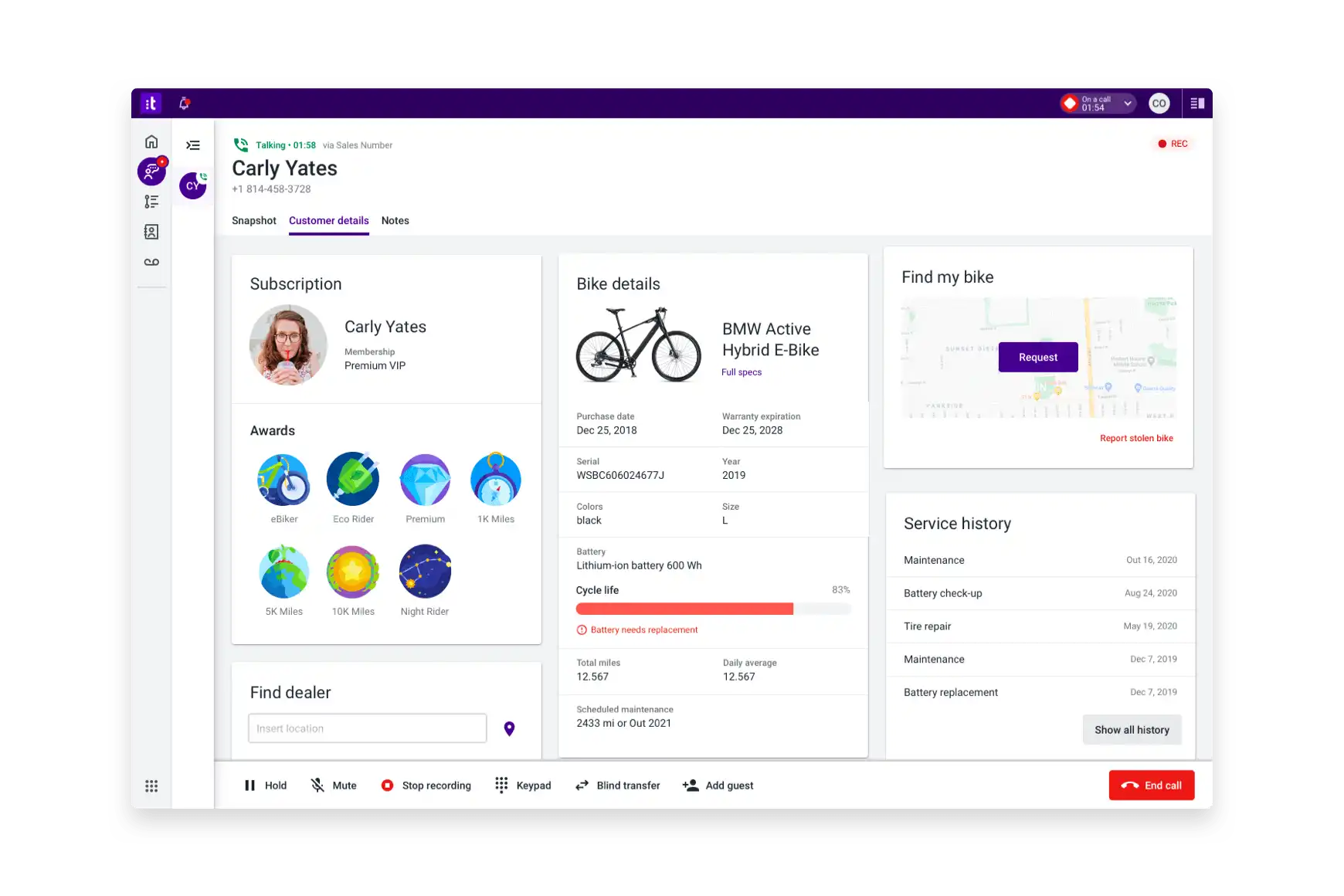
Talkdesk is a global cloud contact center platform offering advanced automation and analytics capabilities. It supports extensive integration with business tools.
Key Features:
- Sophisticated routing, monitoring, and escalation options
- Real-time dashboards and AI-generated insights
- Speech analytics and predictive routing
- Wide range of CRM integrations
Ideal For: Companies trying to improve operations using AI and linked solutions.
Why It Stands Out in 2025: Automation and predictive features enable agents to fix issues more quickly and perform better.
Cloud-Based: Yes
G2 Rating: 4.4/5 (7,000+ ratings)
6. 8×8 Contact Center
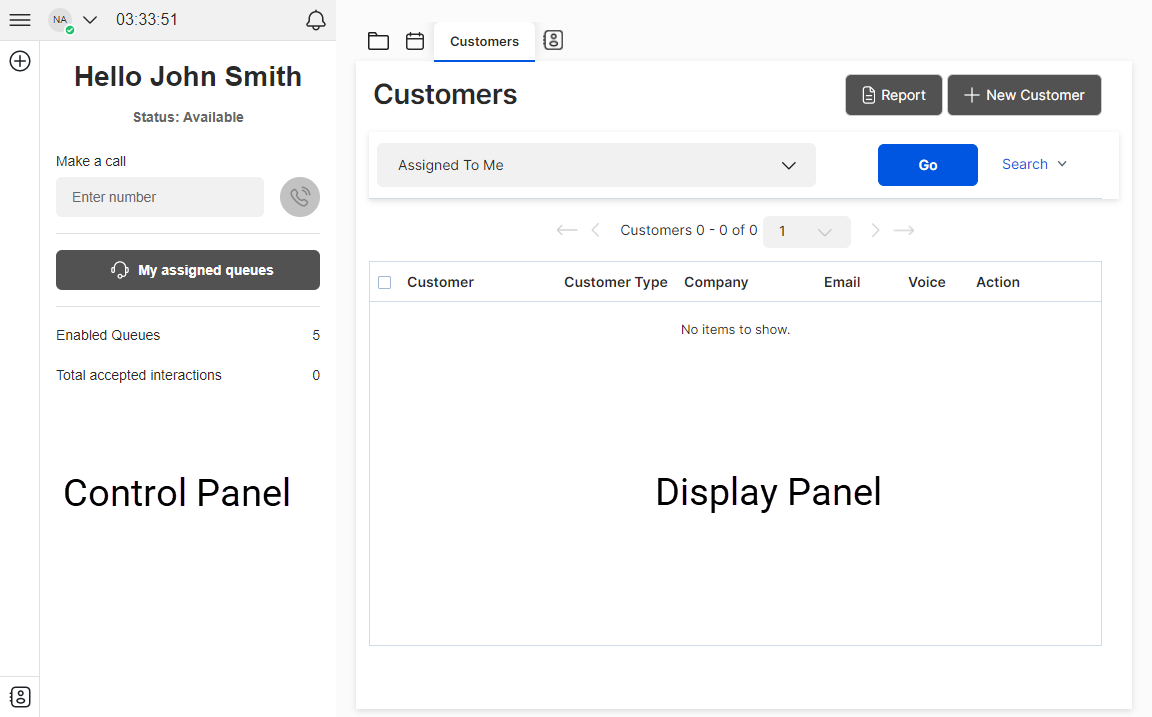
8×8 Contact Center provides omnichannel customer engagement with integrated AI analytics. It is part of 8×8’s broader communications suite.
Key Features:
- Routing for voice, chat, social, and messaging apps
- Agent assist with sentiment and intent analysis
- Secure payment handling within contact flows
- CRM and messaging system integrations
Ideal For: Organizations aiming for AI-powered customer understanding and protected payment handling.
Why It Stands Out in 2025: Integrates sentiment tracking, social chat, and payment safeguards into one solution.
Cloud-Based: Yes
G2 Rating: 4.1/5 (200+ ratings)
7. Amazon Connect
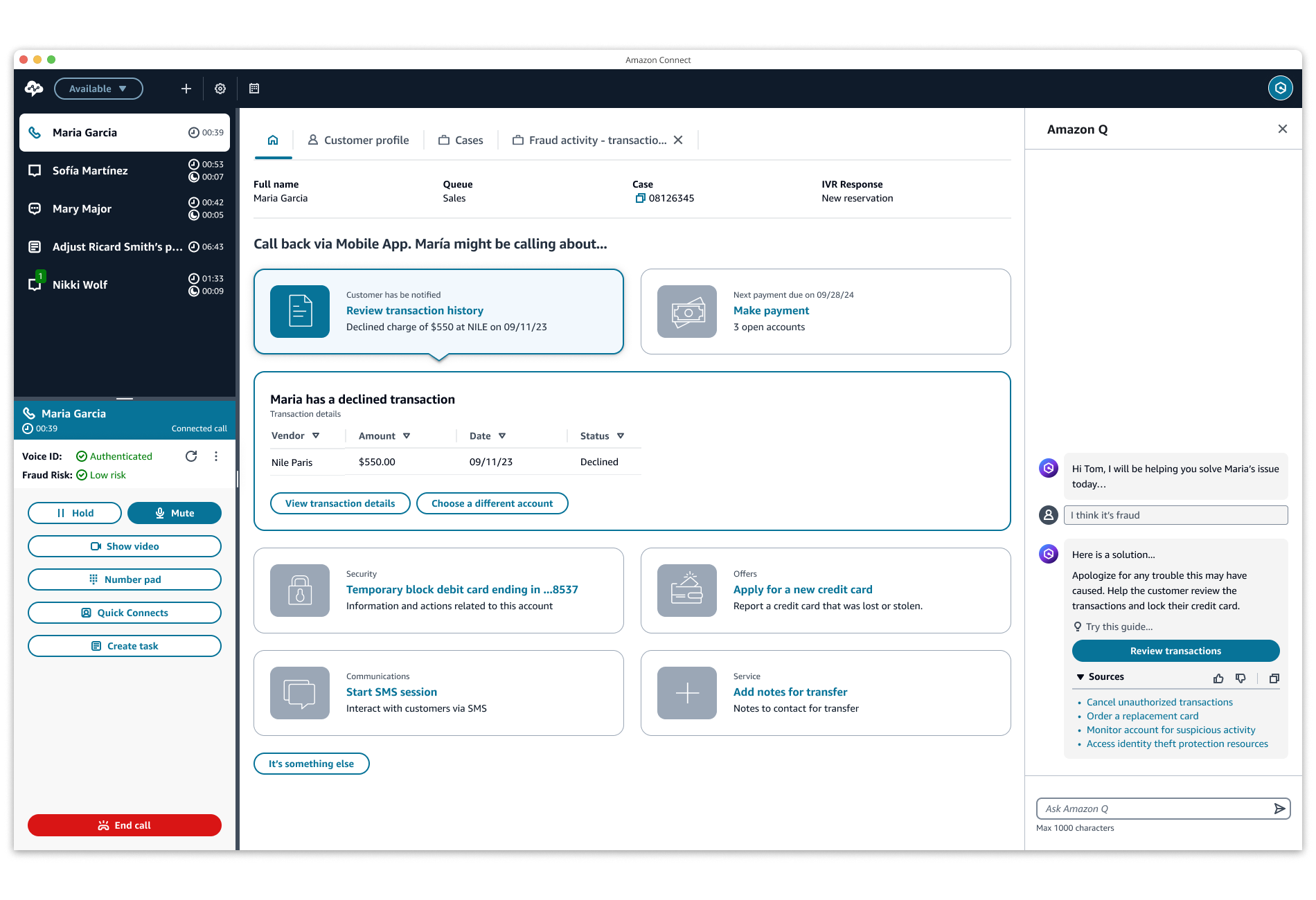
Amazon Connect runs as a serverless contact center service on AWS. It scales up or down on its own, so there is no need for manual adjustments. The service also works smoothly with AWS products and many outside applications.
Key Features:
- AI call routing with IVR
- Auto-adjusting capacity
- AWS analytics and ML integrations
Ideal For: Businesses on AWS that want a contact center designed for easy scaling and worldwide access.
Why It Stands Out in 2025: Its serverless build and AWS integration allow teams to launch and grow the system with minimal effort.
Cloud-Based: Yes
G2 Rating: 4.4/5 (60+ ratings)
8. Zendesk Talk
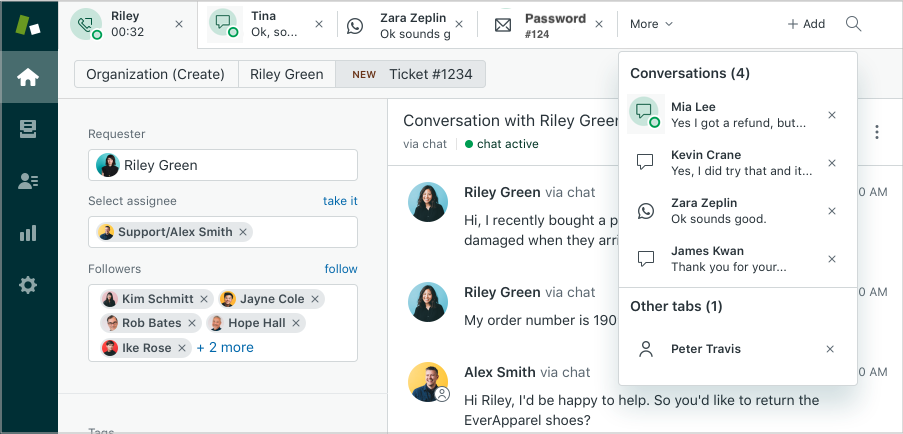
Zendesk Talk extends the Zendesk customer service suite with voice and SMS capabilities. It allows unified handling of voice and digital interactions.
Key Features:
- IVR, call routing, and monitoring functions
- Call recording and automatic ticket creation
- Tight integration with Zendesk CRM tools
Ideal For: Businesses that already use Zendesk and want built-in voice support.
Why It Stands Out in 2025: Integrated CRM and contact center systems provide agents with complete customer context during each engagement.
Cloud-Based: Yes
G2 Rating: N/A
9. Freshdesk Contact Center
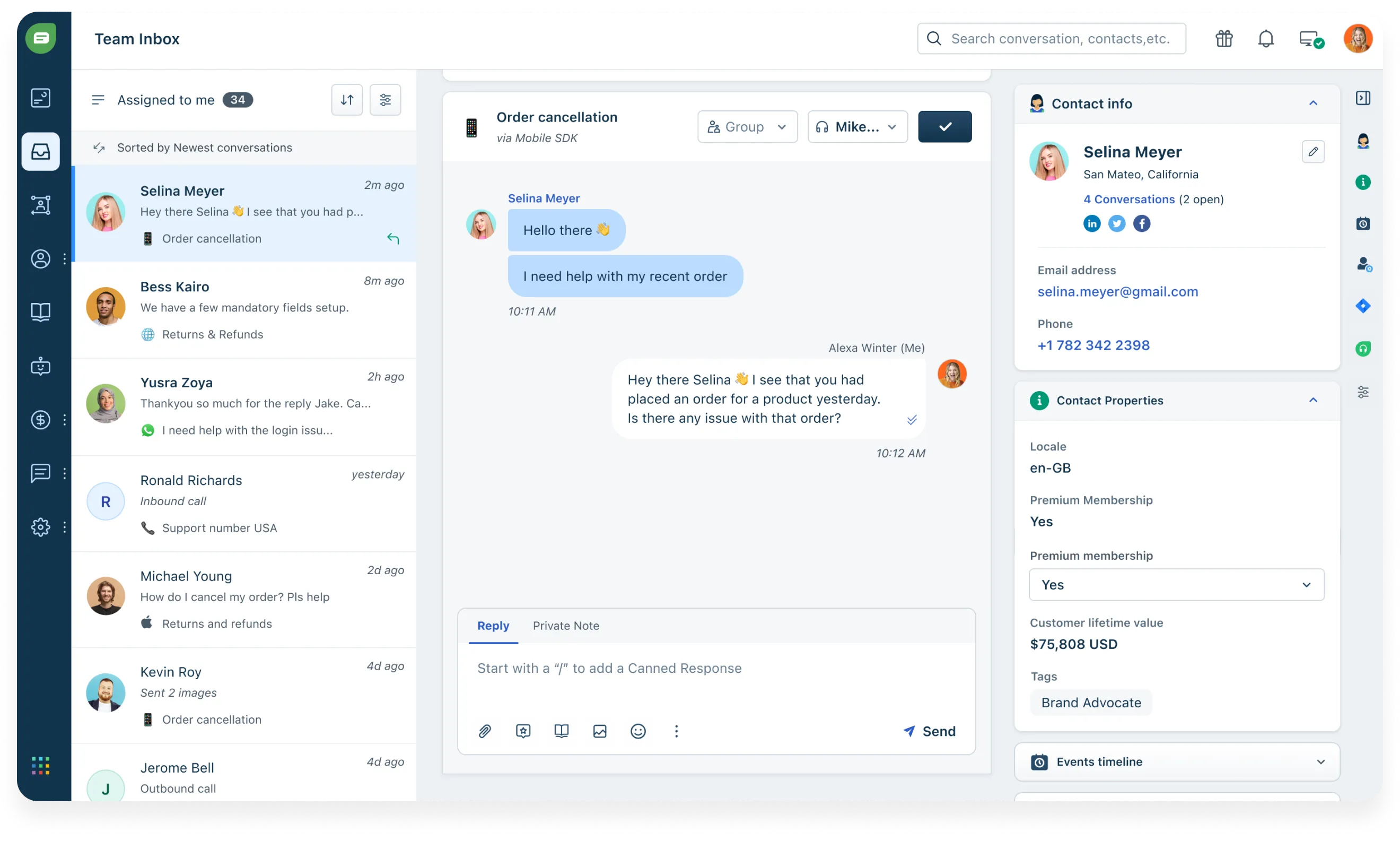
Freshdesk Contact Center is a cloud-based platform that can be set up quickly and used easily—it is suitable for small to medium-sized teams.
Key Features:
- Call routing, masking, and recording
- Call forwarding, conferencing, and monitoring
- Omnichannel support with service level tracking
Ideal For: Small and medium-sized businesses seeking an economical, full-featured contact center solution.
Why It Stands Out in 2025: Provides extensive features in a simple interface that promotes business growth.
Cloud-Based: Yes
G2 Rating: N/A
10. Five9
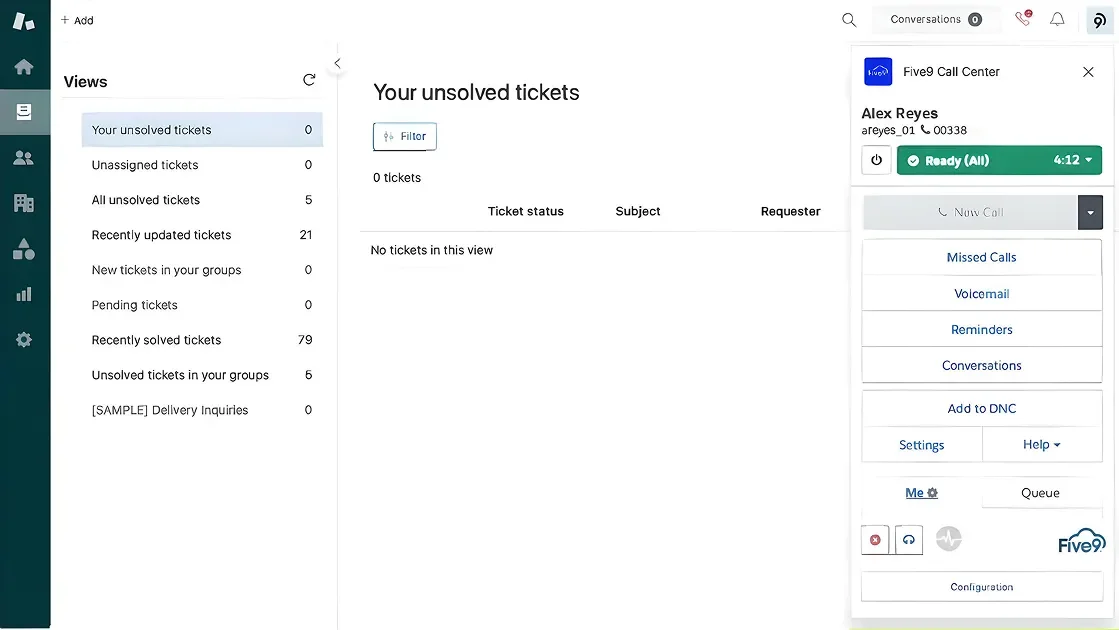
Five9 provides a cloud contact center that manages calls in both directions. Its AI routing works with many of the most common CRM systems.
Key Features:
- AI-driven and predictive call distribution
- Workforce performance monitoring and optimization
- CRM integrations
Ideal For: Medium to large companies needing an AI-optimized, unified platform.
Why It Stands Out in 2025: Adaptive routing and live performance tracking maintain quality during high-demand periods.
Cloud-Based: Yes
G2 Rating: 4.1/5 (2,000+ ratings)
11. Twilio Flex
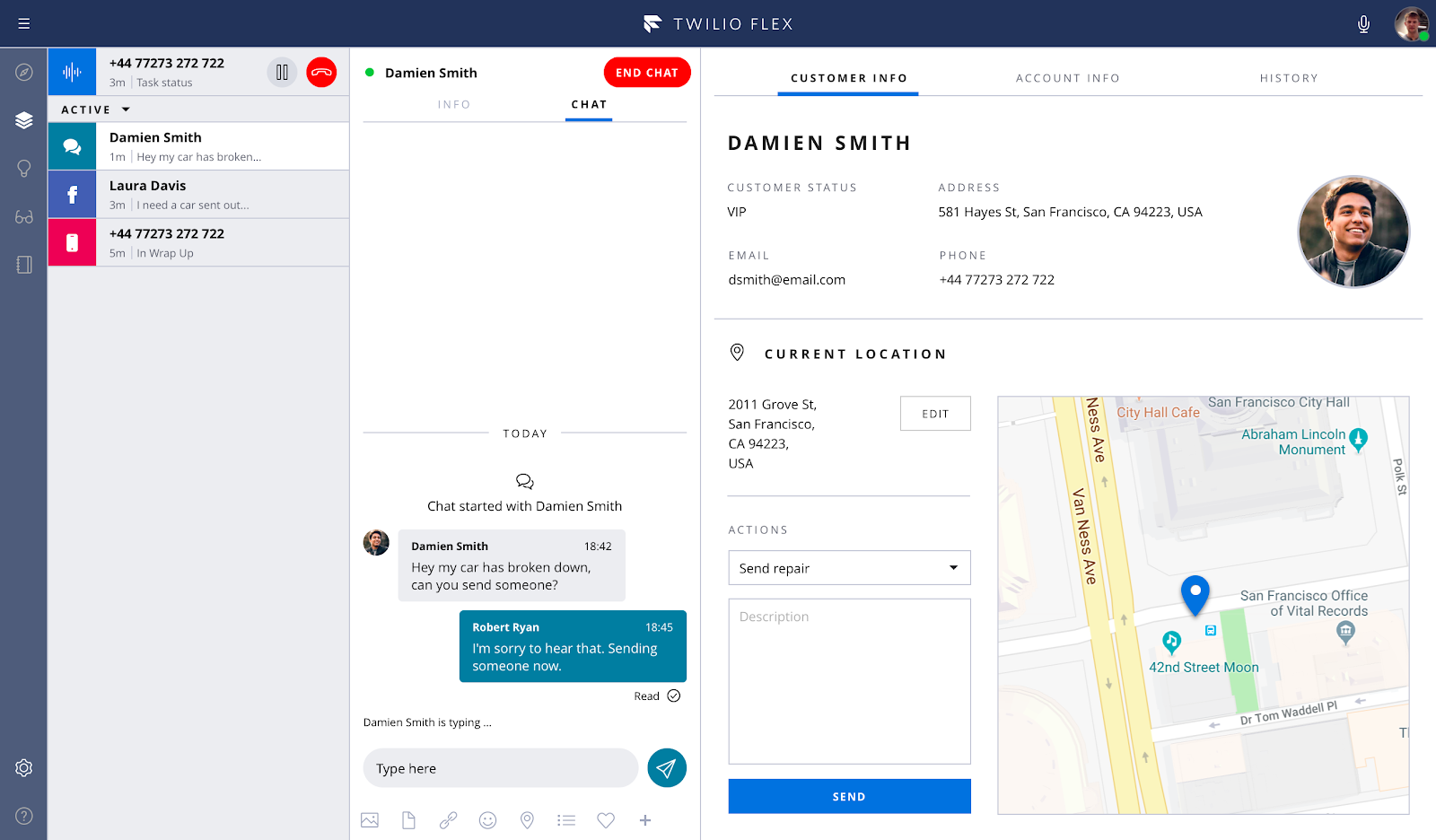
Twilio Flex is a contact center platform in the cloud that you can shape from the ground up. It’s designed for full customization, giving developers the tools to build the exact workflows, screens, and connections their business needs.
Key Features:
- Developer APIs for creating tailored processes and agent dashboards
- Works with many CRM systems, chatbot tools, and data analysis platforms
- No heavy tech setup
Ideal For: Teams that want their contact center to fit into their current way of working instead of forcing changes to match pre-set features.
Why It Stands Out in 2025: The flexible framework lets companies adjust both customer and agent interactions so they work in line with existing goals and processes.
Cloud-Based: Yes
G2 Rating: 4/5 (30+ ratings)
How Contact Center Software Drives Omnichannel Customer Experience
By 2025, customers expect quick responses and a smooth experience no matter how they reach out. A call, a message, or a tweet should all feel connected. Businesses that deliver this level of service earn loyalty, keep customers from leaving, and see better performance across the board.
The way to achieve this is with a contact center platform that brings all channels together and keeps service steady from start to finish. It handles phone, email, chat, SMS, social, and self-service together so the tone and quality stay the same everywhere.
1. Unified Channel Management
A unified platform eliminates the barriers between channels. From the first chat message to a follow-up email or phone call, agents keep the full story in view. Customers skip the frustration of repeating information, and the resolution moves along sooner.
Benefits for Customers and Agents
- For Customers: Speedier answers, less backtracking, and a consistent experience wherever they connect
- For Agents: Access to a single view of each customer’s history, making it easier to respond efficiently and solve problems in the first interaction
Data and Insights
Omnichannel systems record analytics from each customer contact. Managers can monitor service performance, track sentiment trends, and identify areas where additional training or process adjustments are necessary. Live dashboards let them respond immediately when wait times rise or service targets are at risk.
Business Impact
According to Aberdeen Group, companies with effective strategies can achieve customer retention rates of up to 89%, compared with 33% for those relying on disconnected systems. Providing a consistent, integrated customer experience across all platforms increases long-term revenue growth and customer loyalty.
Trends Shaping the Future of Contact Center Solutions
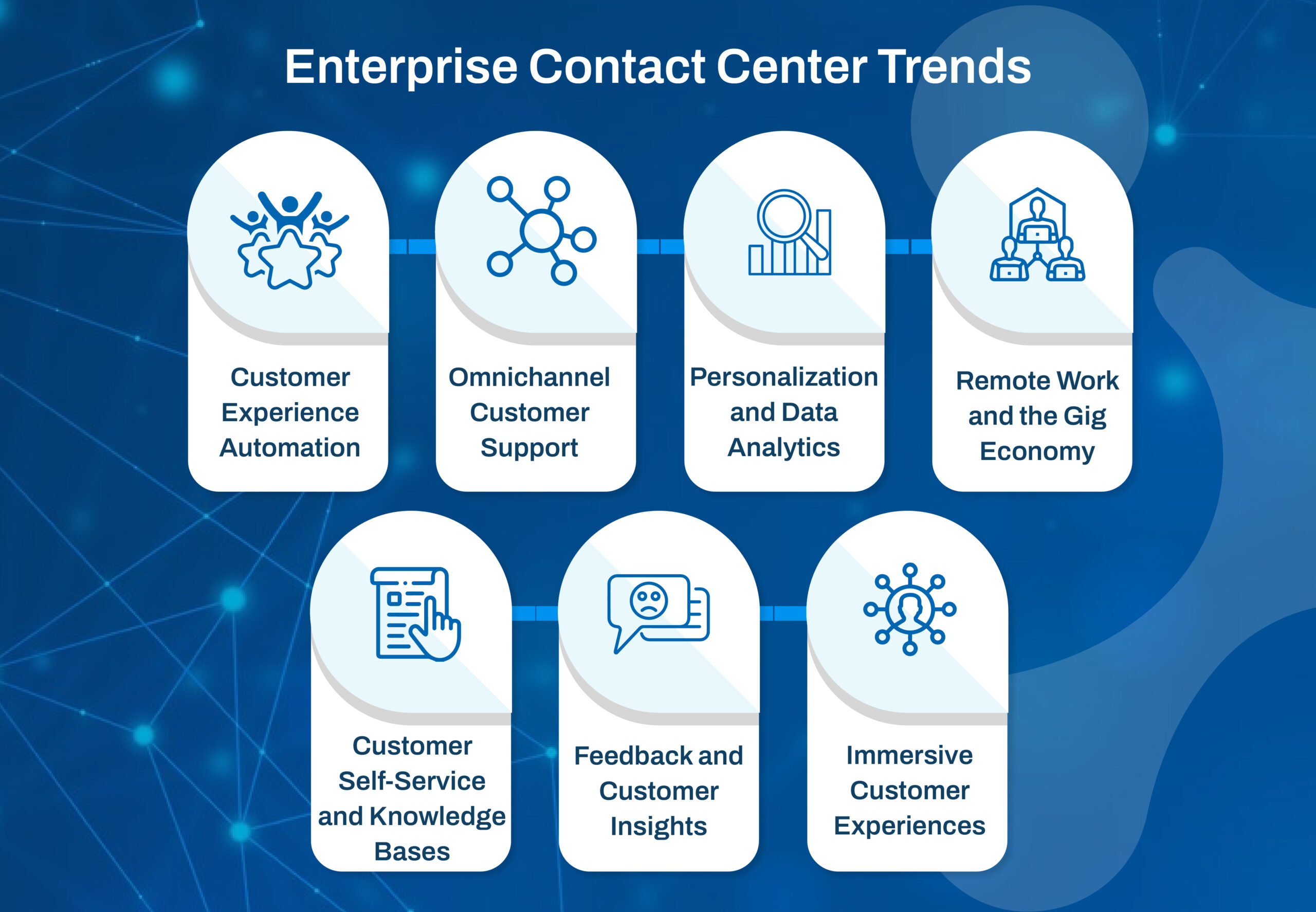
Advances in contact center systems are happening quickly, bringing new trends that will guide how organizations engage with customers in the future.
1. AI-Powered Agent Support and Automation
AI tools are taking over routine contact center tasks such as conversation summaries, data accuracy checks, and providing live customer context. This lets agents spend more time on complex, personalized service.
Gartner expects that by 2029, agentic AI will resolve around 80% of standard queries on its own, reducing the need for human involvement and lowering costs.
2. Hyper-Personalization Powered by Real-Time Data
Service tailored to personal needs is becoming a clear customer expectation. Contact centers now pair live data with generative AI to make experiences more relevant. It speeds up responses and provides context-based responses.
3. Intelligent Routing and Skill-Based Matching
The software pairs each inquiry with a suitable agent by using skill data, current queue status, and past interactions. Resolution is faster, and service quality is higher.
4. Voice AI and Emotion Recognition
Upgrades in speech-to-text and language processing have improved the way voice agents handle calls.
Gartner says generative AI, conversational interfaces, and digital customer service will be major shifts in support by 2028. These will help streamline calls and improve service quality.
Hybrid emotion recognition uses both tone and text analysis to help agents understand a customer’s mood and respond in a more caring way.
5. Cloud Adoption and CCaaS Momentum
A lot of organizations are switching to CCaaS and cloud setups. The reason isn’t just scalability, though that matters. It is also the flexibility to plug in new tools, whether that’s AI or customer support across channels.
Conclusion: Choose the Right Contact Center Software for Your Business
Finding the right contact center tool can improve engagement and efficiency. The ideal choice will suit your size, needs, and growth strategy.
Smaller firms often prefer quick-to-launch systems with intuitive design and omnichannel options. Large businesses may require detailed analytics, AI routing, and compliance support.
Talkdesk emphasizes automation and predictive analytics. UJET and Freshdesk stand out for mobile-first and simple designs.
For companies aiming to unify their support, a platform such as Kapture CX can help. It brings automation, reporting, and ticket handling under one roof. The result is smoother service for customers and more useful tools for staff, who can act faster and with greater confidence. Get a personalized demo to see how it can align with your business goals!
FAQs
It is software that brings together customer conversations from multiple channels into one place. By doing so, it directs requests to the right person, stores the history of interactions, and provides performance reviews. The result is a more organized service and a consistent experience for customers.
AI is now handling many tasks that once needed manual effort. For example, it can send a caller straight to the right person, highlight when a customer sounds frustrated, or take care of common questions without needing staff. Handling these smaller jobs leaves agents free to deal with problems that need more attention.
Customers often move between channels depending on what feels most convenient. Without a connected system, those conversations feel scattered. When all channels are tied together, the experience feels steady no matter how the customer reaches out, which builds confidence and reduces frustration.
A common measure is First Call Resolution (FCR). It’s about whether the customer’s issue is handled on their first contact. If it is, support feels more efficient, answers come faster, and people leave the interaction more satisfied.













